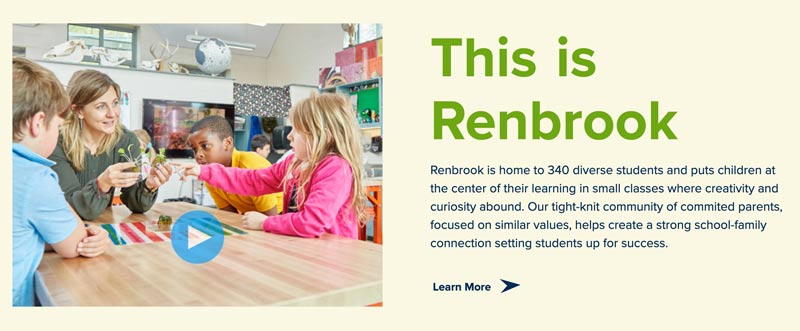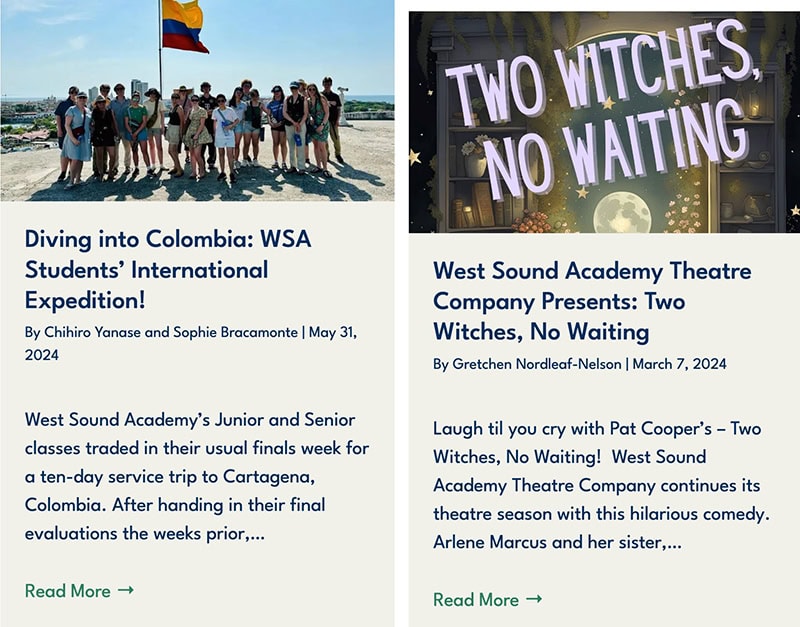Crafting Engaging Content for Small School Websites
Creating engaging content for small school websites is essential to attract prospective families, keep current families informed, and showcase the school's unique qualities. With limited resources and a tight-knit community, small schools must be strategic in their content creation efforts. This guide explores various strategies and tips for crafting compelling content that resonates with your audience.
Understanding Your Audience
The first step in creating engaging content is understanding your audience. Small school websites typically have a diverse audience, including prospective students and parents, current students and parents, alumni, and staff. Each group has different needs and interests, so it's crucial to tailor your content accordingly.
Prospective Students and Parents
For prospective families, the website is often their first impression of your school. They are looking for information about academic programs, extracurricular activities, school culture, and admissions procedures. Content aimed at this audience should be informative, welcoming, and highlight what sets your school apart.
Current Students and Parents
Current families visit the website for updates, announcements, and resources. They need easy access to the school calendar, newsletters, lunch menus, and contact information for teachers and staff. Providing a dedicated section for current families can help streamline their experience.
Alumni and Staff
Alumni are interested in staying connected with the school and hearing about its achievements. Content such as alumni news, reunion information, and ways to give back can engage this audience. Staff members need resources and internal communications, which can be housed in a secure section of the website.

Crafting Compelling Content
1. Tell Your School's Story
Every school has a unique story. Share your school's history, mission, values, and achievements. Use a mix of text, images, and videos to bring your story to life. Highlighting notable alumni, significant milestones, and unique traditions can create a sense of pride and community.
2. Showcase Academic and Extracurricular Programs
Prospective families want to know about the academic and extracurricular opportunities available. Create detailed pages for each program, including course descriptions, faculty profiles, and student testimonials. Highlight achievements, such as awards and recognitions, to demonstrate the quality of your programs.
3. Use High-Quality Visuals
High-quality photos and videos can make a significant impact on your website's engagement. Showcase your school's campus, classrooms, events, and student activities. Visual content helps convey the school environment and culture, making it more relatable for visitors.
4. Feature Student and Teacher Stories
Personal stories are powerful. Feature profiles of students, teachers, and staff members to give a human face to your school. Share their experiences, achievements, and perspectives. These stories can be in the form of written articles, video interviews, or podcasts.
5. Provide Useful Resources
Make sure your website offers useful resources for your community. This includes a regularly updated school calendar, newsletters, forms, and contact information. Providing easy access to these resources can improve the user experience and keep your community informed.
6. Highlight Community Involvement
Showcase your school's involvement in the local community. Share stories about service projects, partnerships with local organizations, and community events. Highlighting these efforts can build a sense of connection and pride among your audience.
7. Use SEO Best Practices
Search engine optimization (SEO) is crucial for ensuring your content is discoverable online. Use relevant keywords in your content, optimize images with alt text, and create meta descriptions for each page. Regularly update your content to keep it fresh and relevant.
8. Create Content with Accessibility in Mind
Accessibility is essential for ensuring that all users, including those with disabilities, can access and engage with your content. Implementing accessibility features like alt text for images, transcripts for videos, and a clear, readable font can make your website more inclusive. Tools like screen readers and keyboard navigation should work seamlessly with your site, ensuring it meets the needs of all users.
9. Engage Your Audience with Interactive Content
Interactive content can significantly boost engagement by encouraging users to participate rather than passively consume information. Consider incorporating interactive elements like quizzes, polls, and virtual tours. A virtual tour, for instance, allows prospective families to explore your campus from the comfort of their home, providing an immersive experience that static images can't offer. Similarly, a quiz about "Which School Club Is Right for You?" can engage students and help them discover new interests.
10. Encourage Community Contributions
Involve your school community in content creation by encouraging contributions from students, parents, and staff. This not only diversifies the content but also fosters a sense of ownership and pride among contributors. For example, students can write blog posts about their favorite classes or extracurricular activities, while parents can share testimonials or tips for navigating school life. Teachers and staff can contribute insights into educational practices or provide updates on classroom projects.

Content Types and Formats
Diversifying your content types and formats can keep your website engaging and cater to different audience preferences.
Blog Posts
Regularly updated blog posts can keep your website fresh and engaging. Topics can include school news, educational insights, student achievements, and tips for parents. Encourage different contributors, such as teachers, students, and parents, to provide a variety of perspectives.
News and Announcements
Keep your community informed with a dedicated news section. Share important announcements, event updates, and achievements. This can be organized chronologically and categorized for easy navigation.
Photo Galleries
Create photo galleries to showcase school events, trips, and daily life. Organize photos into albums by event or theme to make them easily accessible. High-quality images can make a significant impact and convey the school's vibrant atmosphere.
Videos
Videos are an engaging way to share stories and information. Create videos for school tours, student and teacher profiles, event highlights, and instructional content. Short, well-produced videos can capture attention and convey a lot of information quickly.
Infographics
Infographics can present complex information in an easily digestible format. Use infographics to explain processes, such as the admissions procedure, or to showcase statistics and achievements. Visualizing data can make it more engaging and memorable.
Social Media Integration
Integrate your social media feeds into your website to keep content dynamic and up-to-date. Displaying recent posts from platforms like Instagram, Facebook, and Twitter can showcase real-time engagement and encourage visitors to follow your social channels.
Testimonials and Reviews
Incorporating testimonials and reviews from students, parents, and alumni can add credibility and personal insight into your school's environment. Positive testimonials can be a deciding factor for prospective families, providing them with authentic feedback from those who have experienced the school firsthand. Ensure that these testimonials are prominently displayed on relevant pages, such as the admissions section, to maximize their impact.
Maintaining and Updating Content
Regularly updating your website content is essential to keep it relevant and engaging. Develop a content calendar to plan and schedule updates. Assign responsibilities to staff members or a dedicated web team to ensure consistent content creation and maintenance.
Monitor and Analyze Performance
Use analytics tools to monitor your website's performance. Track metrics such as page views, time spent on page, and user engagement. Analyze this data to understand what content resonates with your audience and adjust your strategy accordingly.
Solicit Feedback
Encourage feedback from your community to understand their needs and preferences. Use surveys, feedback forms, and direct communication to gather insights. Implementing feedback can improve the user experience and ensure your content meets the needs of your audience.
Conclusion
Crafting engaging content for small school websites requires a deep understanding of your audience and a strategic approach to content creation. By telling your school's story, showcasing programs, using high-quality visuals, and providing valuable resources, you can create a website that resonates with your community. Regular updates, performance monitoring, and feedback implementation will ensure your content remains relevant and engaging. With these strategies, your small school website can become a powerful tool for attracting and retaining families, building community, and showcasing your school's unique qualities.